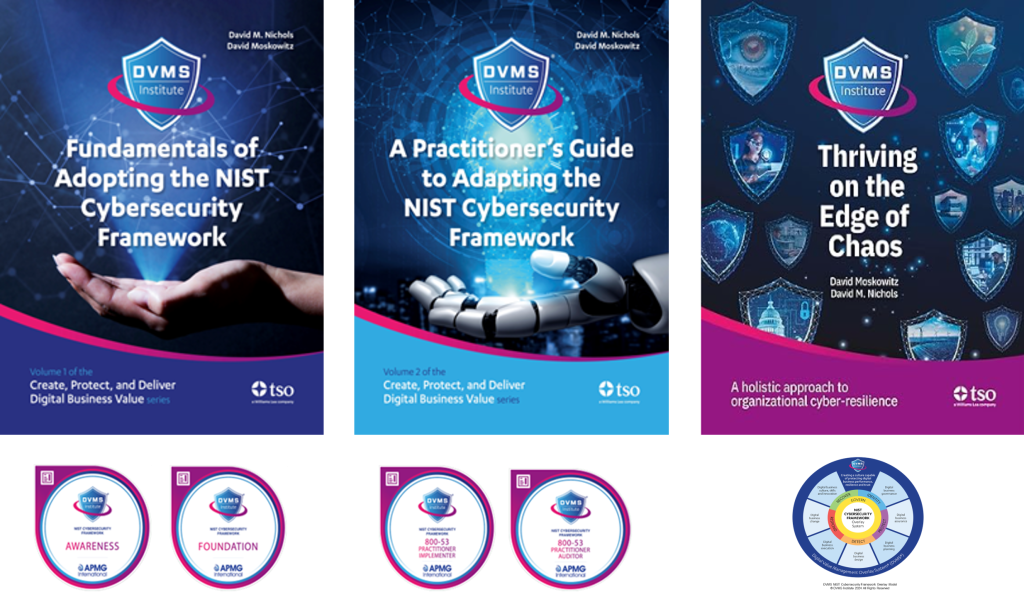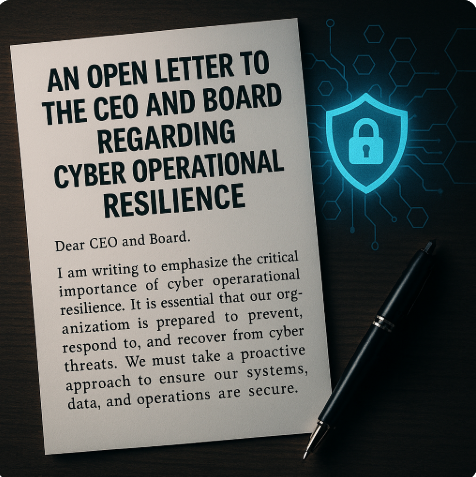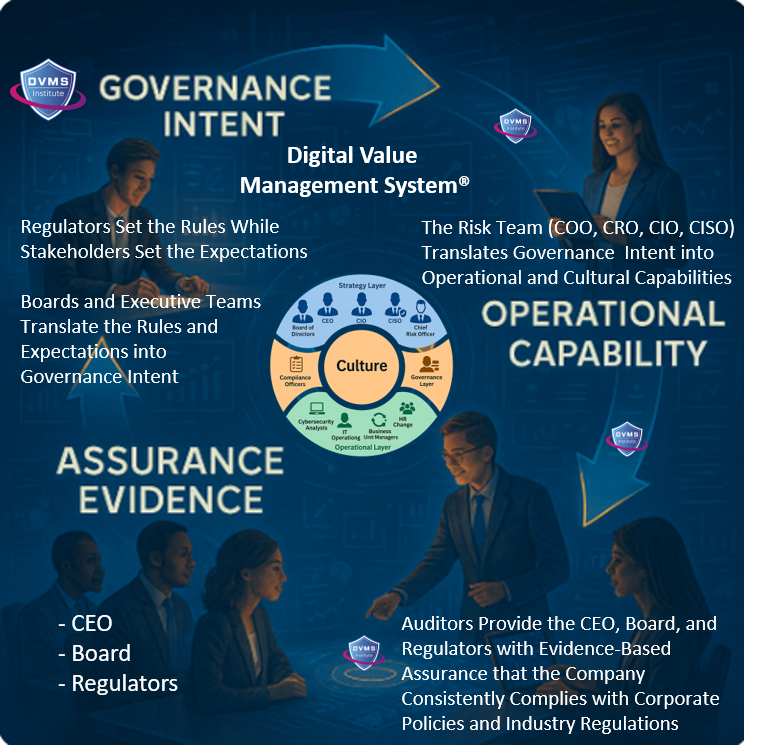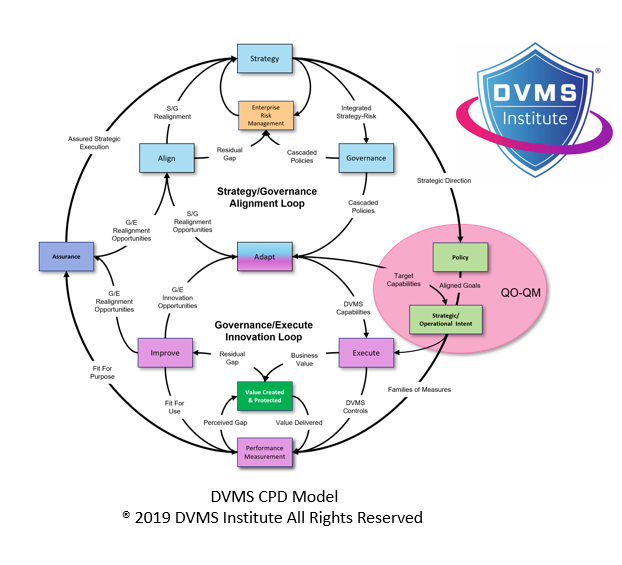An Open Letter to the CEO and Board Regarding Cyber Operational Resilience
Rick Lemieux – Co-Founder and Chief Product Officer of the DVMS Institute
Prioritizing Investment in Cyber Operational Resilience
We are at a critical juncture where our organizational ability to create and deliver value is inseparable from our ability to protect it. In today’s complex digital environment, the question is no longer whether we will face cyber disruption, but when. The more pressing question is: How prepared are we to detect, withstand, and recover from that disruption while continuing to deliver on our mission and protect stakeholder trust?
This is not a technology conversation. It is a business conversation about operational resilience, reputational protection, and long-term competitiveness. Investing in cyber operational resilience is not just about managing risk—it is about ensuring the continuity of performance, trust, and value delivery across every corner of the organization.
Why Cyber Resilience Is Now a Strategic Imperative
We operate in a volatile, interconnected, fast-evolving landscape where the boundaries between internal operations and external digital ecosystems have blurred. Threat actors—from cybercriminals to state-sponsored groups—are no longer merely targeting systems. They are exploiting human behavior, organizational silos, and process gaps.
Supply chains, partners, vendors, and even customers can become entry points for disruption. Attackers increasingly rely on indirect, sophisticated techniques that bypass traditional defenses. Recent global incidents have demonstrated how even well-defended enterprises suffer not from a lack of controls but a fragmented and outdated view of cybersecurity as a technical issue.
Cyber disruptions today go far beyond data loss. They halt business operations, undermine customer confidence, and cause financial and reputational damage that can take years to repair. In some cases, they can threaten an organization’s very existence.
The Problem with Traditional Thinking
Many organizations still approach cybersecurity reactively, responding to events, allocating funding after breaches, or treating risk as an isolated IT concern. But resilience cannot be retrofitted. It must be designed into our operations from the ground up. Traditional thinking leads to fragmented systems, poor visibility, and misalignment between security investments and strategic goals.
This mindset also burdens technical teams while disconnecting risk from the core of the business. It results in slow responses, poor prioritization, and leadership blind spots. In short, it puts the organization in a position of constant catch-up, unable to anticipate and absorb shocks efficiently.
Reframing the Issue: Resilience as a Business Capability
Resilience must be treated as a core business capability, like finance, operations, or product development. It is about ensuring that, no matter the disruption, the organization can continue to serve customers, protect value, and recover with minimal impact.
This means embedding resilience into the fabric of our operations—across leadership, culture, technology, and strategy. It means ensuring that all teams—not just IT—understand their role in protecting critical operations and are empowered to act accordingly.
When resilience is approached systemically, it enables better decisions, more apparent risk prioritization, more efficient resource use, and a stronger foundation for innovation and growth.
Key Benefits of Investing in Cyber Operational Resilience
- Risk Reduction: A resilient enterprise experiences fewer incidents, lower recovery costs, and less operational downtime.
- Stakeholder Confidence: Customers, regulators, investors, and employees are more likely to trust an organization with proactive risk management.
- Regulatory Readiness: As regulators increasingly focus on digital risk, a resilient posture ensures alignment with current and emerging requirements.
- Operational Efficiency: When protection is embedded in process and design, the organization spends less time and money reacting to problems and more time delivering value.
- Strategic Agility: Resilient organizations can pivot faster, recover quicker, and take calculated risks with more confidence.
A Practical Path Forward
Building operational resilience doesn’t require a complete overhaul. It requires clarity, leadership, and deliberate action.
- Baseline the Current State: Understand where we are today regarding risk visibility, threat readiness, response capability, and recovery maturity. This includes technology, people, and process dimensions.
- Prioritize What Matters: Not all systems and data are equally important. Identify and secure the operations and assets that are most critical to customer trust, regulatory compliance, and financial performance.
- Embed Accountability: Resilience is not the job of one department. It must be owned by leadership and distributed across the enterprise, with clear roles and measurable objectives.
- Break Down Silos: Encourage collaboration between teams—IT, operations, legal, HR, and business units. Resilience depends on timely communication, shared insights, and unified response protocols.
- Build a Learning Culture: Encourage proactive behavior. Foster an environment where staff at all levels are trained, alert, and engaged in identifying and mitigating risk. Make it safe to raise concerns and share lessons learned.
- Continuous Innovation: Resilience is not a destination but a continuous capability. Establish regular review cycles, test scenarios, and update plans based on changes in technology, the threat landscape, and the business.
The Role of Leadership and Culture
No resilience initiative can succeed without leadership ownership and cultural alignment. Boards and executives must lead by example, model risk-informed decision-making, and ensure that resilience is part of strategic planning, not an afterthought.
Culture is a multiplier. When teams understand that resilience is about protecting the business and its customers, not just complying with rules, they take ownership. When risk is seen as a shared responsibility, it becomes manageable. When leaders communicate that disruptions are inevitable—but not unmanageable—it sets a tone of realism and readiness, not fear.
The Cost of Inaction
Every year we delay building these capabilities, we increase the likelihood and impact of a systemic incident. A future cyber disruption will not wait for next year’s budget or next quarter’s board meeting. It will exploit our weaknesses—whether in process, technology, culture, or leadership—and test our ability to respond under pressure.
The question is not whether we will be targeted. The question is how ready we are—and how quickly we can recover.
A Call to Action
Resilience is not a technology problem. It is a business imperative. And now is the time to act. Let us take this opportunity to shift from reacting to preparing, from siloed controls to integrated resilience, and to leverage resilience as a competitive advantage.
We need a forward-looking, Adaptive, and Culture-Aligned approach to Governance, Resilience, and Assurance (GRA) that positions our business to:
- Maintain Operational Stability Amidst Constant Digital Disruption
- Drive Agility and Trust Across Your Digital Ecosystem
- Satisfy Critical Regulatory and Certification Requirements
- Leverage Cyber Resilience as a Competitive Advantage
I respectfully urge this Board to make cyber operational resilience a top strategic priority, backed by clear investment, leadership engagement, and cross-functional support. By doing so, we will protect what we’ve built and position our organization to thrive, even in the face of disruption.
Sincerely,
[Your Name]
[Your Title]
[Date]
About the Author

Rick Lemieux
Co-Founder and Chief Product Officer of the DVMS Institute
Rick has 40+ years of passion and experience creating solutions to give organizations a competitive edge in their service markets. In 2015, Rick was identified as one of the top five IT Entrepreneurs in the State of Rhode Island by the TECH 10 awards for developing innovative training and mentoring solutions for boards, senior executives, and operational stakeholders.
In today’s digitally driven economy, cyber disruptions are no longer an “if” but a “when.”
The DVMS Institute’s Certified Training Programs teach organizations the skills to build and operate a Holistic, Adaptive, and Culture Aligned System capable of coordinating Cyber Operational Resilience actions across a Complex Digital Ecosystem.
True cyber resilience requires the seamless alignment of organizational Strategy, Governance, and Operations supported by a culture committed to sustaining and continually innovating digital business operations performance.

The DVMS positions cyber resilience as a strategic, enterprise-wide capability powered by the Institute’s CPD, Z-X, and 3D Knowledge models.
This systems-based approach to cyber operational resilience requires engagement from all Employees and Partners, each playing a distinct role in proactively identifying and mitigating the systemic risks that threaten digital business operations.
This adaptive, forward-looking approach to Governance, Resilience, and Assurance (GRA) positions businesses to:
- Maintain Operational Stability Amidst Constant Digital Disruption
- Drive Agility and Trust Across Your Digital Ecosystem
- Satisfy Critical Regulatory and Certification Requirements
- Leverage Cyber Resilience as a Competitive Advantage
DVMS Explainer Videos
- Architecture Video: David Moskowitz explains the DVMS System
- Case Study Video: Dr. Joseph Baugh Shares His DVMS Story.
- Overlay Model – What is an Overlay Model
- ZX Model – The MVC’s that power operational resilience
- CPD Model – Adaptable governance and assurance
- 3D Knowledge Model – Enabling holistic organizational learning
- FastTrack Model – A phased approach to cyber resilience
Digital Value Management System® is a registered trademark of the DVMS Institute LLC.
® DVMS Institute 2025 All Rights Reserved




